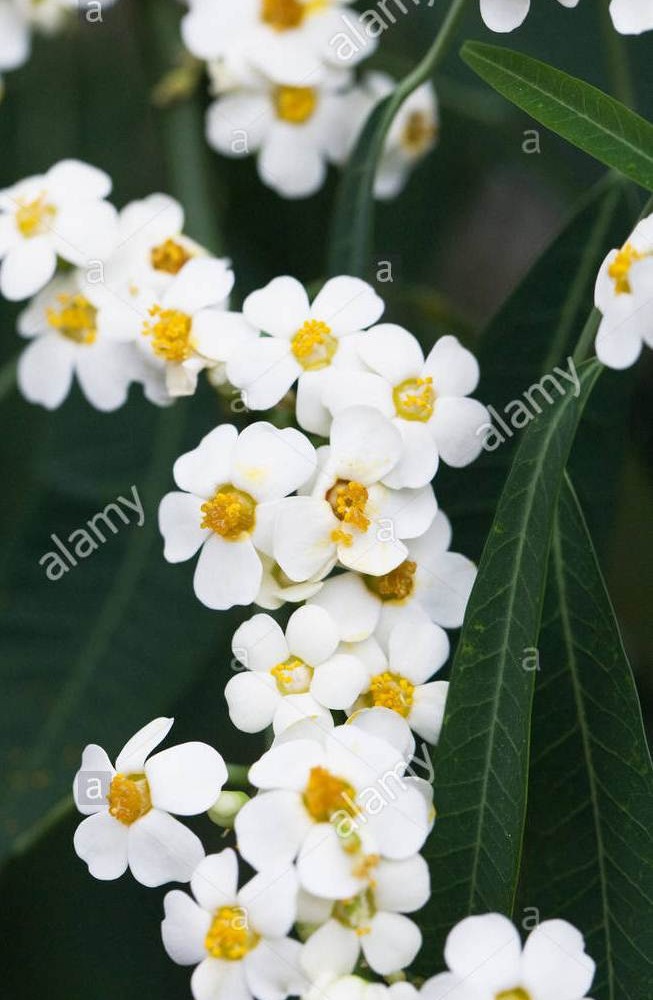Scarlet-Plume
(Euphorbia fulgens)

Description
Euphorbia fulgens, the scarlet plume, is a species of flowering plant in the spurge family Euphorbiaceae, native to Mexico. Growing to 1.5 m (4.9 ft) tall by 1 m (3.3 ft) broad, it is a deciduous shrub with long, weeping branches and narrow leaves. In winter orange-red flowers growing in the leaf axils cover the length of the branches. The Latin specific epithet fulgens means “shining, glistening”. It is not hardy, requiring temperatures above 10 °C (50 °F). It must therefore be grown under glass in temperate regions. It has gained the Royal Horticultural Society’s Award of Garden Merit. Euphorbia is a very large and diverse genus of flowering plants, commonly called spurge, in the spurge family (Euphorbiaceae). "Euphorbia" is sometimes used in ordinary English to collectively refer to all members of Euphorbiaceae (in deference to the type genus), not just to members of the genus. Some euphorbias are commercially widely available, such as poinsettias at Christmas. Some are commonly cultivated as ornamentals, or collected and highly valued for the aesthetic appearance of their unique floral structures, such as the crown of thorns plant (Euphorbia milii). Euphorbias from the deserts of Southern Africa and Madagascar have evolved physical characteristics and forms similar to cacti of North and South America, so they (along with various other kinds of plants) are often incorrectly referred to as cacti. Some are used as ornamentals in landscaping, because of beautiful or striking overall forms, and drought and heat tolerance. The common name "spurge" derives from the Middle English/Old French espurge ("to purge"), due to the use of the plant's sap as a purgative. The botanical name Euphorbia derives from Euphorbos, the Greek physician of King Juba II of Numidia (52–50 BC – 23 AD), who married the daughter of Anthony and Cleopatra. Juba was a prolific writer on various subjects, including natural history. Euphorbos wrote that one of the cactus-like euphorbias (now called Euphorbia obtusifolia ssp. regis-jubae) was used as a powerful laxative. In 12 BC, Juba named this plant after his physician Euphorbos, as Augustus Caesar had dedicated a statue to the brother of Euphorbos, Antonius Musa, who was the personal physician of Augustus. In 1753, botanist and taxonomist Carl Linnaeus assigned the name Euphorbia to the entire genus in the physician's honor.
Taxonomic tree:







